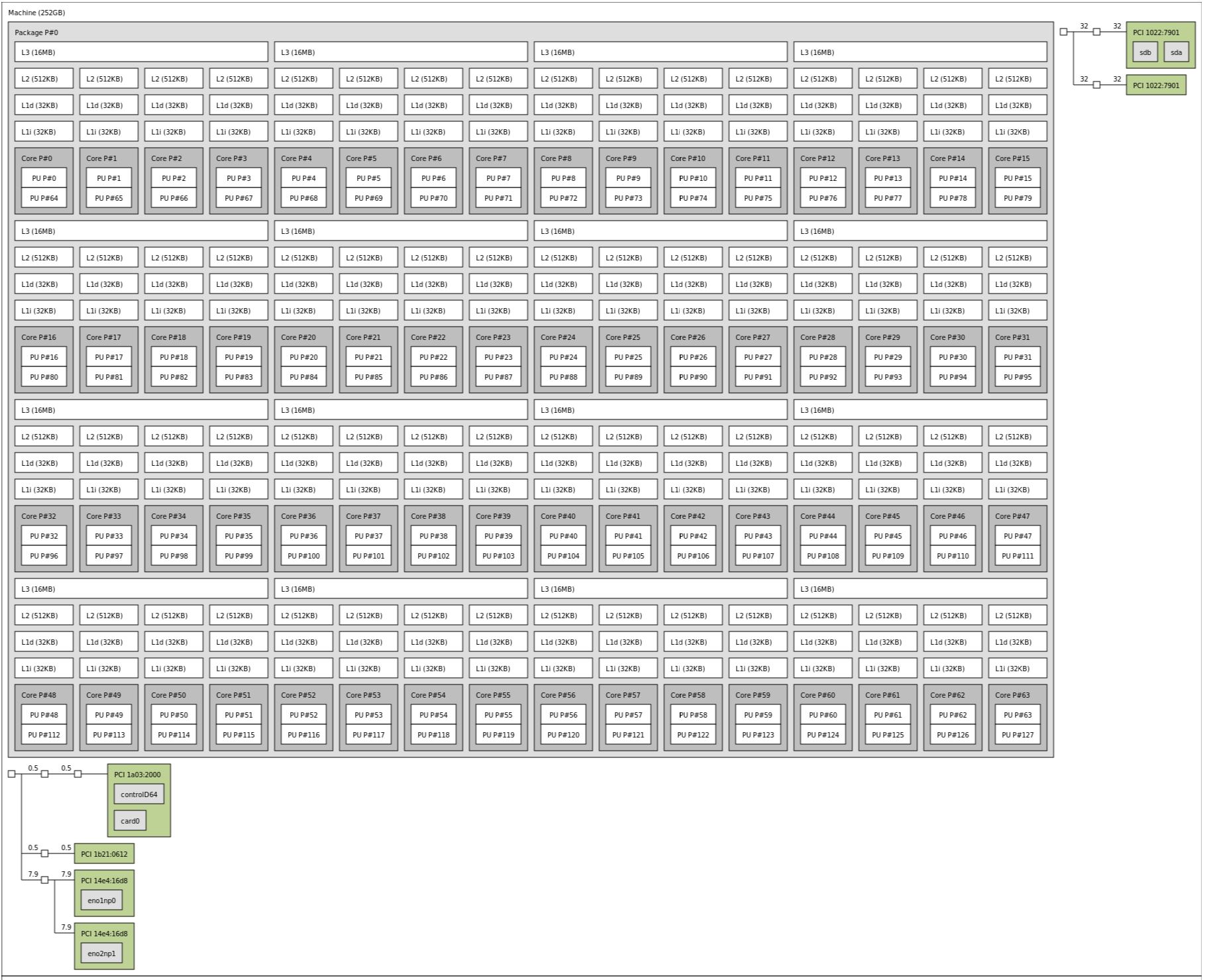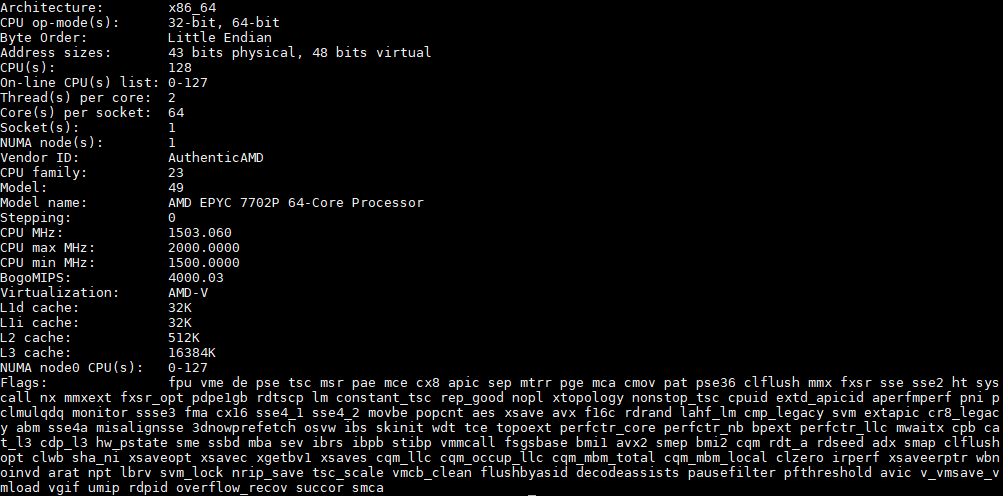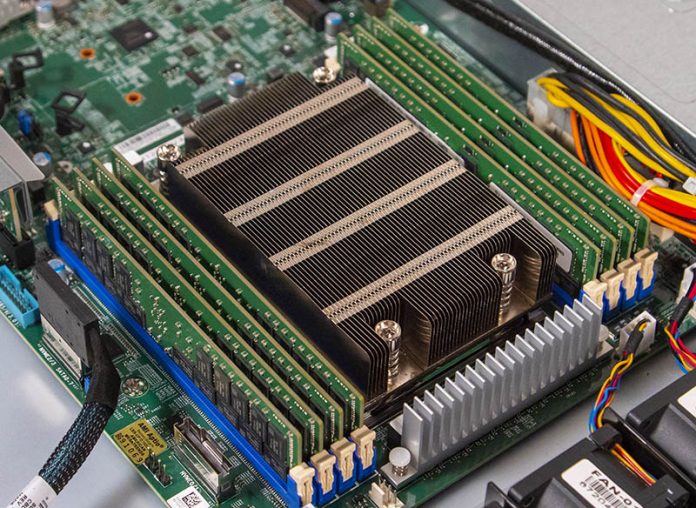The AMD EPYC 7702P is simply a game-changing part. It is the processor that the current Intel Xeon generation has no direct answer to. With this 64-core part, AMD is delivering more cores than a dual-socket Intel Xeon Platinum 8280 system. Indeed, one would need four Intel Xeon CPUs and a system like the Inspur Systems NF8260M5 4P Intel Xeon OCP Server to get 64 cores and 128 threads in the current generation. What is more, the chip has a 4TB memory capacity, something you would need an “L” Xeon at a $7000 premium, or two “M” Xeons at a $3000 premium each to match. AMD has PCIe Gen4, while Intel has PCIe Gen3. AMD has 128x PCIe lanes while Intel has only 96x PCIe lanes with two CPUs. All of this and AMD’s list price is $4425, or less than a single 24-core Intel Xeon Platinum 8260.
Therein lies the opportunity for AMD. It has delivered (more than) Intel’s dual-socket performance in a single socket. Whereas with the first-generation EPYC, Intel was saying that the multi-NUMA node architecture to reach a given core count was not good, the tables have turned. Now Intel needs multiple NUMA nodes for a core count, and potentially worse. Intel may need more systems to match the AMD EPYC 7702P’s capacity for cores and PCIe bandwidth. At some point, Intel will get competitive, but in this generation, having an AMD EPYC 7702P is a clear advantage.

Key stats for the AMD EPYC 7702P: 64 cores / 128 threads with a 2.0GHz base clock and 3.35GHz turbo boost. There is 256MB of onboard L3 cache. The CPU features a 200W TDP. These are $4,425 list price parts.
Here is what the lscpu output looks like for an AMD EPYC 7702P:

For some perspective regarding how massive this is: the Sony Playstation 3 has 256MB of RAM. That is now a single CPU cache at around the midpoint of today’s CPU pricing.
A Word on Power Consumption
We tested these in a number of configurations. The lowest spec configuration we used is a Supermicro AS-1014S-WTRT. This had two 1.2TB Intel DC S3710 SSDs along with 8x 32GB DDR4-3200 RAM. One can get a bit lower in power consumption since this was using a Broadcom BCM57416 based onboard 10Gbase-T connection, but there were no add-in cards.
Even with that here are a few data points using the AMD EPYC 7702P in this configuration when we pushed the sliders all the way to performance mode and a 200W cTDP:
- Idle Power (Performance Mode): 104W
- STH 70% Load: 245W
- STH 100% Load: 261W
- Maximum Observed Power (Performance Mode): 273W
As a 1U server, this does not have the most efficient cooling, still, we are seeing absolutely great power figures here. The impact is simple. If one can consolidate smaller nodes onto an AMD EPYC 7702P system, there are power efficiency gains to be attained as well.
Next, let us look at our performance benchmarks before getting to market positioning and our final words.





While 7702P is excellent compared to all existing Xeon CPUs it’s not clear if/when it’s better than dual 7452 (which are cheaper, faster, has 2x RAM bandwidth and 2x RAM size limit) except under very significant power constraints (given existence of DP 2U4N servers from several vendors space doesn’t seem to be much of an issue) or if used with paid software licensed per socket.
Any other common scenario when 7702P is preferable to dual 7452s?
Igor that is something I do want to test (we do not have EPYC 7452’s yet.)
Single socket you also have lower power consumption per core, and more PCIe lanes per core. You also do not have a socket-to-socket traversal. So there are advantages as well. 2U4N EPYC runs out of space for 16 DIMMs per CPU so you are limited to 16 DIMMs per node.
Can you run open source HCI like Proxmox on it?
@Igor,
You are correct that 2x 7452 give you 2x RAM capacity+bandwidth, and CPU cycles (7452 has higher base clock — 2.9 vs. 2.2Ghz). And while 2×7452 has a smaller cost premium over the 7702 (2x$3,400 vs. $6,450). These are not the only things that need to be considered.
1 – Power and Cooling costs. TDP of 7702=225w, TDP of 2×7452=450w.
TDP == $$$, this can add up over time
2 – System cost. Proportionately, a single CPU system is less expensive than dual CPU system.
3 – Single CPU is more efficient than dual CPUs for some operations, no inter-CPU traffic.
Dawkins jr – you can. We have this running in the lab and it worked out-of-the-box.
BinkyTO – the 7702P is $4425 and the 7452’s are $2025 each. The 7542 is $3400 while the 7702 (non-P) is $6450. All list prices.
Linus Tech Tips: “BRO 64 CORES THIS IS COOL”
STH: “Here is the TCO benefit, what you can replace and why. Here are the market dynamics at play.”
Thanks for doing something useful.
The Playstation 3 actually has 512MB of RAM, split across two busses. The CELL BE can only directly access 256MB of it but the graphics and audio and some DMA can access all of it.
Hi @Patrick,
Why “… single socket you also have … more PCIe lanes per core”? It may be true for some pairs of 1-CPU vs 2-CPU motherboards (however in most cases it’s not so) but architecturally it’s the same 128 PCIe 4.0 lanes (or even more – supposedly configurable of up to 160 – lanes for 2-CPU configuration).
Looking forward to test results of dual 7452s.
This is another great review… But I still wonder why no one talks about the elephant in the room (not the Del C6525 or the Bullsequanna) but the fact that EPYC can now be 8P at one NUMA node per socket…
It is interesting that with core counts most situation can’t use 8P but HPC will love it… And Rome is seemingly made for 2P sleds… 1024 threads in a 2U4N…?
Great stuff, more nicely detailed information.
[Although I think the paragraph following the chess graph isn’t reading as you intended.]
And it seems pretty likely that dual 7402 (despite only having 48 cores) has similar or better performance than 7702P (if CPU2017_rate results are any indication)
64 cores is nice, but I do not have unlimited resources as a private person. So 16 or 24 cores EPYC WS seems the best value.